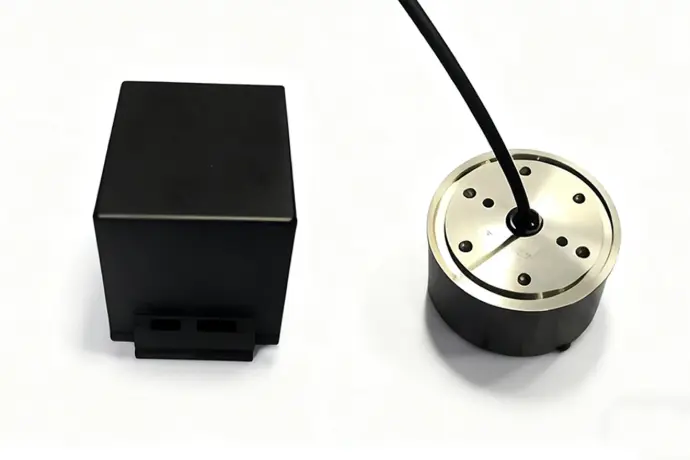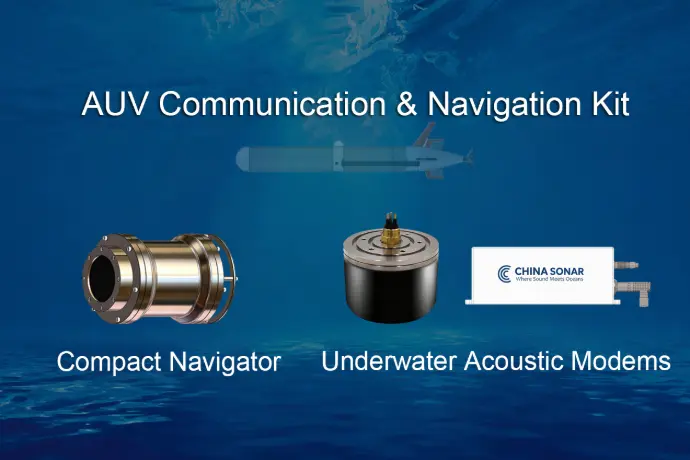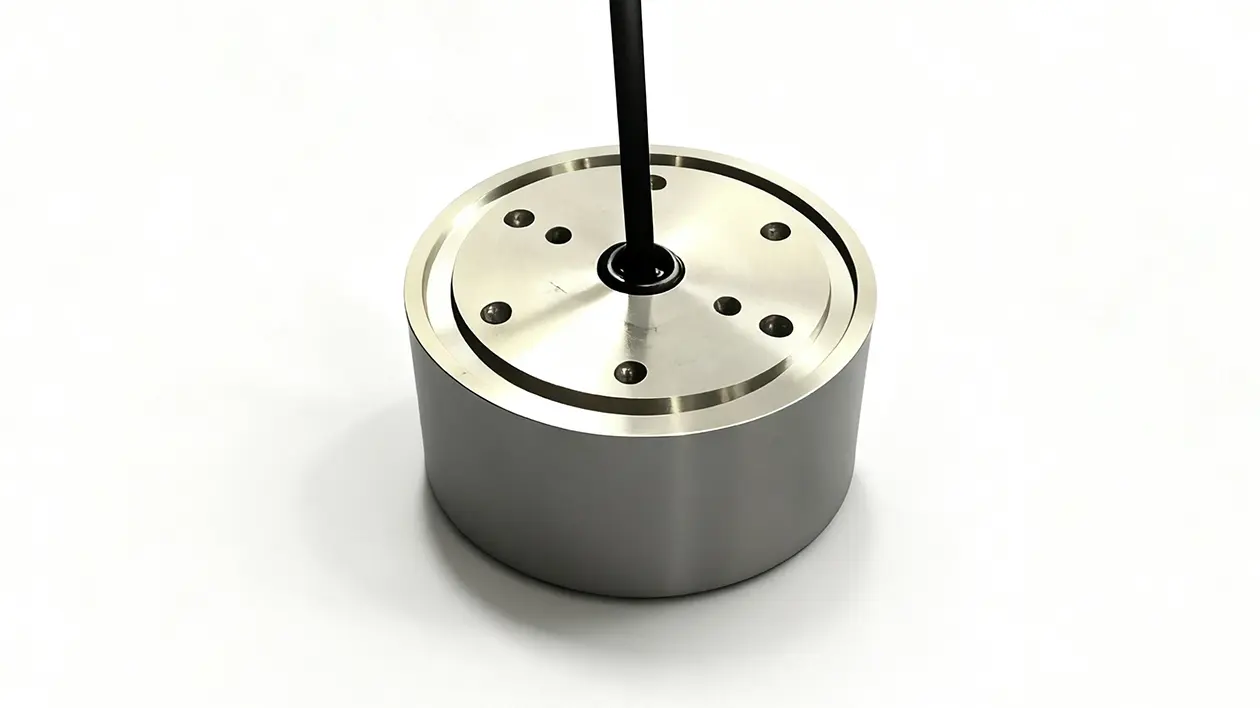
DVL-600K-Phased
Key Features
- High-accuracy bottom tracking: Reliable up to 80 m altitude with a velocity accuracy of ±0.2% ±1 mm/s, resolution down to 0.05 mm/s.
- Phased-array beam design: 4-beam system, 2.3° beam width, 30° nominal angle.
- Compact and lightweight: Transducer <0.6 kg; processor module <0.9 kg.
- Multiple depth ratings: Standard 300 m; optional 3000 m or 6000 m.
- Low power consumption: ≤15 W average, ideal for battery-powered missions.
- Easy integration: Standard RS-422 interface, PD6 ASCII data format, INS compatibility.
- Reliable operation: Wide operating temperature range and customizable pressure resistance.
Overview
System Composition
The DVL-600K-Phased Doppler Velocity Log consists of two main components: the phased array transducer and the electronic chassis.
- Phased Array Transducer (waterproof): Responsible for receiving velocity-sensitive acoustic signals to achieve precise velocity measurements.
- Electronic Chassis (non-waterproof): Handles signal preprocessing, acoustic signal analysis, velocity computation, and acoustic transmission.
In practice, the electronic chassis is typically installed in the dry compartment, while the transducer is mounted in the wet end, implementing a dry/wet separation design for easier system integration and maintenance.
Specifications
Applications
-
Autonomous Underwater Vehicles (AUVs)
Compact and large-diameter AUVs, providing precise bottom velocity and altitude measurements for navigation and path control. -
Remotely Operated Vehicles (ROVs)
Inspection-class ROVs, delivering accurate bottom tracking and altitude data in near-bottom or confined environments. -
Uncrewed Surface Vessels (USVs)
Surface platforms, offering reliable speed-over-ground and drift compensation when GPS is unavailable or degraded.
Explore the DVL-Phased Series
The DVL-Phased Series includes the versatile 600 kHz model for mid-range missions and the long-range 300 kHz model for deep-sea operations. Whether for coastal trials, ocean monitoring, or deep-water engineering and system integration, the DVL-Phased Series delivers accurate, stable, and reliable underwater velocity and navigation performance powered by phased-array beamforming and advanced bottom-tracking capability.

AUV Communication & Navigation Kit
Compact Navigator & Underwater Acoustic Modem
Designed for Autonomous Underwater Vehicles (AUVs), the AUV Communication & Navigation Kit delivers high-precision navigation and reliable underwater communication in a unified solution.
- NAVS-3000 Compact Navigator — Provides INS-based positioning, DVL velocity measurements, and depth data for precise real-time navigation.
-
UAC-08160X-OEM Underwater Acoustic Modem — Ensures stable, long-range underwater communication across multiple frequency bands.
Principle of Phased-Array DVL
A Doppler Velocity Log (DVL) operates based on the Doppler effect, measuring the frequency shift of acoustic signals reflected from the seabed or water column. The phased-array DVL enhances this principle by using multiple precisely controlled beams to achieve higher accuracy and stability.
The phased array transducer emits acoustic signals at a fixed frequency toward the seabed. As the vehicle moves, the frequency of the returning echoes shifts according to its relative velocity. By analyzing these Doppler shifts across four beams, the system calculates three-dimensional velocity components and altitude above the seabed.
Compared to conventional single-beam designs, a phased-array DVL offers several advantages:
- Improved accuracy and resolution through beamforming technology.
- Compact structure with no moving parts, ideal for small AUVs, ROVs, and USVs.
- Reliable bottom tracking in shallow or deep waters, with automatic switching to water column tracking when bottom lock is unavailable.
- Seamless integration with INS systems for robust underwater navigation and dead-reckoning.
This makes phased-array Doppler Velocity Logs a critical navigation sensor for autonomous underwater vehicles, remotely operated vehicles, and uncrewed surface vessels, ensuring precise navigation in GPS-denied environments.
